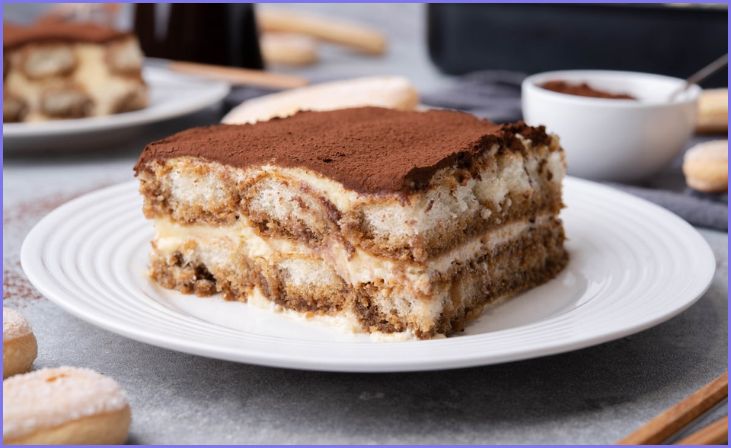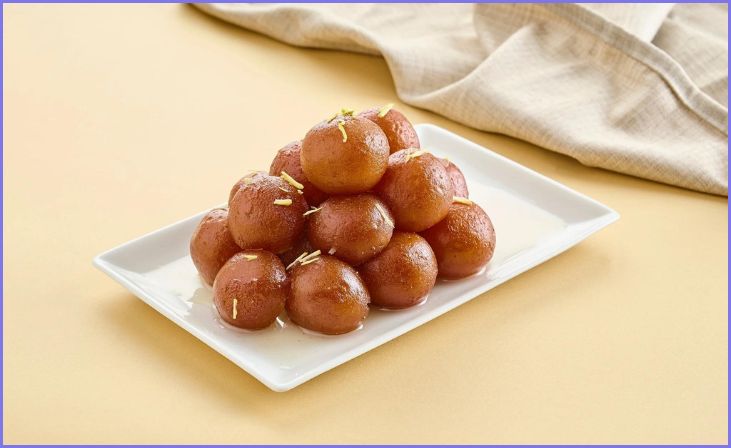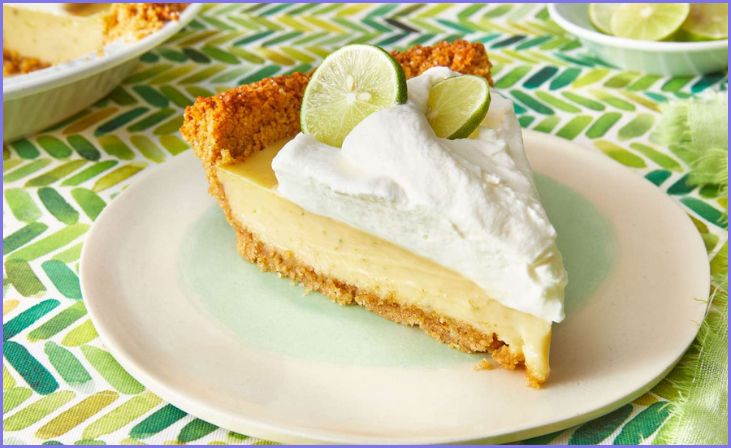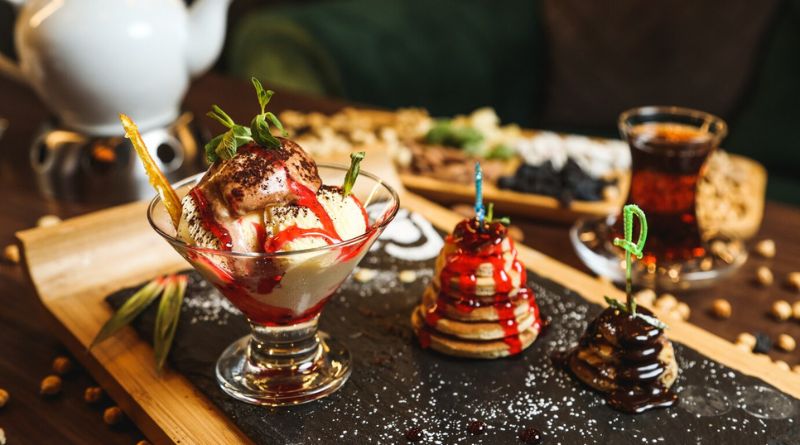Famous Desserts Around the World – Desserts, a universal delight transcending borders, embody the sweet conclusion to culinary experiences across the globe. Beyond mere confections, desserts encapsulate cultural narratives, reflecting traditions, ingredients, and culinary artistry unique to each region.
This exploration of famous desserts around the world unveils a tantalizing journey through iconic delicacies, unveiling the mastery of European pastries, the subtlety of Asian sweets, the richness of Middle Eastern treats, and the diverse flavors of the Americas and Africa.
From the delicate layers of French macarons to the indulgent warmth of Indian Gulab Jamun, this culinary odyssey celebrates the sweet tapestry woven by different cultures. Join us as we embark on a global tour, savoring the historical significance and contemporary delights that make desserts a cherished and delectable part of our shared human experience.
Famous Desserts Around the World
Tiramisu (Italy)

Tiramisu, an iconic Italian dessert, layers espresso-soaked ladyfingers with a velvety blend of mascarpone cheese and sweetened whipped cream. Dusting the top with cocoa powder adds a final touch to this indulgent treat.
The name “Tiramisu” translates to “pick me up” in Italian, reflecting the dessert’s reputation for providing a delightful, caffeinated lift. With its rich and creamy profile, Tiramisu has become a global favorite, celebrated for its exquisite balance of textures and flavors.
Mochi (Japan)
Mochi, a traditional Japanese delicacy, is a sweet rice cake with a chewy, soft texture. Made from glutinous rice pounded into a sticky, elastic consistency, mochi serves as a versatile base for various sweet treats.
Often filled with sweet red bean paste, ice cream, or fruit, mochi encapsulates a delightful blend of flavors. This delectable dessert is not only a culinary delight but also an integral part of Japanese cultural celebrations and ceremonies.
Whether enjoyed on its own or incorporated into other dishes, mochi’s unique texture and sweet fillings make it a beloved and distinctive dessert in Japanese cuisine.
Also, Read – things to do with a can of chickpeas
Baklava (Middle East)
Baklava, a renowned Middle Eastern dessert, is a luscious pastry that layers thin sheets of filo dough with a rich filling of chopped nuts, commonly walnuts or pistachios.
The assembled layers are baked to a golden crispness and then drenched in a sweet syrup, often infused with fragrant ingredients like rose or orange blossom water.
The result is a symphony of textures—crispy, flaky, and nutty—complemented by the sticky sweetness of the syrup. This delectable treat is not only cherished in the Middle East but has gained international acclaim for its irresistible combination of crunchy layers and sweet, aromatic flavors.
Churros (Spain)
Churros, a beloved Spanish dessert, are deep-fried dough pastries with a delightful crispy exterior and a tender, doughy interior. Traditionally dusted with a mixture of sugar and cinnamon, these elongated treats often come with a cup of thick hot chocolate or a sweet dipping sauce.
Churros are a popular street food in Spain, enjoyed at breakfast or as an afternoon snack. The dough, made from a simple mixture of flour, water, and salt, is piped through a star-shaped nozzle before frying, resulting in their characteristic ridged appearance.
Whether served plain or adorned with toppings, churros are a deliciously comforting and iconic Spanish indulgence.
Gulab Jamun (India)

Gulab Jamun, a cherished Indian dessert, consists of soft, deep-fried milk solids (khoya or mawa) dumplings, delicately flavored with cardamom and rose water. After frying to a golden hue, these luscious orbs are soaked in a sugar syrup infused with more aromatic spices.
The name translates to “rose berry,” capturing the essence of its fragrant syrup. Gulab Jamun is a quintessential part of festive occasions and celebrations in India, enjoyed warm or at room temperature.
Its melt-in-the-mouth texture, sweet syrup infusion, and aromatic undertones make Gulab Jamun a delectable and symbolic treat, resonating with the rich culinary traditions of the Indian subcontinent.
Pavlova (New Zealand/Australia)
Pavlova, a celebrated dessert in both New Zealand and Australia, is a delicate meringue-based creation named after the Russian ballerina Anna Pavlova. The dessert features a crisp meringue shell with a soft, marshmallow-like interior, topped generously with whipped cream and an assortment of fresh fruits, such as berries and kiwi.
Its contrast of crunchy and pillowy textures, coupled with the sweetness of meringue and the tartness of fruit, creates a harmonious balance. Often served during festive occasions or as a refreshing summer treat, Pavlova embodies a delightful blend of elegance and indulgence, making it a beloved centerpiece in the antipodean dessert repertoire.
Also, Read – Healthy Flight Snacks to Keep You Full and Happy
Pastel de Nata (Portugal)
Pastel de Nata, a beloved Portuguese pastry, is a custard tart with a flaky pastry shell and a rich, creamy custard filling. Originating from the historic bakeries of Lisbon, these delectable treats are often dusted with cinnamon or powdered sugar.
The pastry’s distinct layers shatter delicately upon each bite, revealing a velvety custard center with hints of vanilla and citrus. Best enjoyed fresh from the oven, Pastel de Nata has become an iconic symbol of Portuguese culinary craftsmanship, delighting locals and visitors alike. Its unique blend of textures and flavors has elevated it to international acclaim, making it a must-try dessert in Portugal.
Black Forest Cake (Germany)
Black Forest Cake, a classic German dessert, is a decadent layer cake renowned for its rich flavors and distinctive appearance. Layers of chocolate sponge cake are interspersed with whipped cream and cherries, creating a luscious combination.
The cake is often soaked in kirsch (cherry brandy), infusing it with a delightful boozy note. Adorned with additional whipped cream and chocolate shavings, the cake’s final presentation is both indulgent and visually striking.
Originating from the Black Forest region in Germany, this dessert has achieved global popularity for its harmonious blend of chocolate, cherries, and cream—a timeless treat that continues to captivate dessert enthusiasts around the world.
Bingsu (Korea)
Bingsu, a popular Korean dessert, is a refreshing shaved ice delicacy that has evolved into a culinary art form. Finely shaved ice, akin to fluffy snow, forms the base, topped with an array of delightful ingredients.
Common variations include sweetened red beans, condensed milk, fruit, and rice cakes, creating a medley of textures and flavors. Injeolmi bingsu, for example, features chewy rice cake cubes and a dusting of bean flour.
Bingsu is a sought-after treat, especially during the hot Korean summers, and its versatility allows for creative interpretations, making it a delightful and customizable dessert experience that captivates both locals and visitors alike.
Key Lime Pie (United States)

Key Lime Pie, an iconic dessert from the United States, hails from the Florida Keys. This delectable pie features a zesty filling made with key lime juice, egg yolks, and sweetened condensed milk, nestled in a graham cracker crust.
The lime-infused custard offers a perfect balance of tartness and sweetness, creating a refreshing and indulgent flavor profile. Often topped with whipped cream or meringue, Key Lime Pie captures the essence of the tropical region.
Its vibrant taste and smooth texture make it a beloved American classic, enjoyed year-round but particularly associated with the sunny, coastal vibes of the southern United States.
Conclusion
In conclusion, this sweet odyssey has taken us on a global tour of delightful indulgences, showcasing the rich tapestry of flavors that desserts bring to our tables. From the intricate pastries of Europe to the exotic treats of Asia and the soulful delights of Africa, each dessert tells a story of cultural heritage and culinary artistry.
As we savor these sweet conclusions to meals, let us appreciate the diversity that unites us through a shared love for the delectable and the delightful, making desserts not just a culinary experience but a celebration of our shared human heritage.
FAQs
Famous desserts can be both traditional, rooted in cultural history, and contemporary, reflecting evolving culinary trends. Some desserts have stood the test of time, while others gain fame through innovative reinterpretations and modern twists.
Cultural influences profoundly impact desserts, determining ingredient choices, preparation methods, and even the occasions for which they are served. Local customs, historical events, and regional ingredients all contribute to the unique characteristics of a dessert.
Desserts like chocolate cake, cheesecake, and ice cream have become global favorites, appreciated across various cultures. These desserts often have adaptable recipes, allowing for regional variations while maintaining their core appeal.


